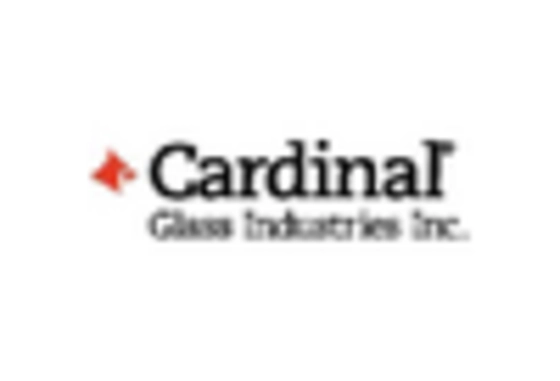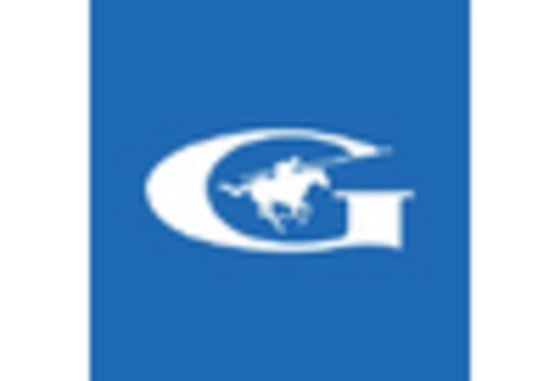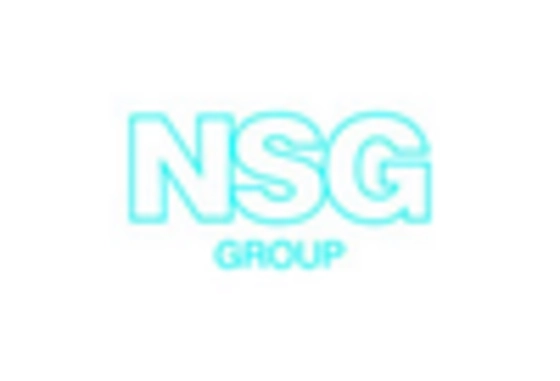The Low E Construction Glass Market is currently characterized by a dynamic competitive landscape, driven by increasing demand for energy-efficient building materials and stringent environmental regulations. Key players such as Saint-Gobain (France), Guardian Glass (US), and AGC Inc. (Japan) are strategically positioned to leverage innovation and sustainability in their operations. Saint-Gobain (France) has focused on enhancing its product portfolio through advanced glazing technologies, while Guardian Glass (US) emphasizes its commitment to sustainability by investing in eco-friendly manufacturing processes. AGC Inc. (Japan) appears to be concentrating on expanding its market presence through strategic partnerships and collaborations, which collectively shape a competitive environment that prioritizes technological advancement and environmental responsibility.
In terms of business tactics, companies are increasingly localizing manufacturing to reduce lead times and optimize supply chains. The market structure is moderately fragmented, with several players vying for market share, yet the influence of major companies remains substantial. This competitive structure allows for a diverse range of products and innovations, fostering a healthy environment for growth and development within the Low E Construction Glass Market sector.
In August 2025, Guardian Glass (US) announced the launch of a new line of Low E glass products designed specifically for commercial applications. This strategic move is significant as it not only enhances their product offerings but also aligns with the growing trend towards energy-efficient solutions in commercial construction. By focusing on this segment, Guardian Glass is likely to capture a larger share of the market, responding to the increasing demand for sustainable building materials.
In September 2025, AGC Inc. (Japan) entered into a partnership with a leading architectural firm to develop innovative glazing solutions that integrate smart technology. This collaboration is indicative of AGC's commitment to staying at the forefront of technological advancements in the industry. By integrating smart technology into their Low E glass products, AGC Inc. is positioning itself as a leader in the market, appealing to architects and builders looking for cutting-edge solutions.
In July 2025, Saint-Gobain (France) completed the acquisition of a regional glass manufacturer to enhance its production capabilities in North America. This acquisition is strategically important as it allows Saint-Gobain to expand its footprint in a key market, thereby increasing its operational efficiency and responsiveness to local demand. Such moves are likely to strengthen their competitive position and enable them to offer a broader range of products to their customers.
As of October 2025, current competitive trends in the Low E Construction Glass Market are heavily influenced by digitalization, sustainability, and the integration of artificial intelligence in manufacturing processes. Strategic alliances are becoming increasingly vital, as companies seek to enhance their technological capabilities and market reach. Looking ahead, it is anticipated that competitive differentiation will evolve, shifting from traditional price-based competition to a focus on innovation, advanced technology, and supply chain reliability. This transition underscores the importance of adaptability and forward-thinking strategies in maintaining a competitive edge in the evolving market landscape.


















Leave a Comment